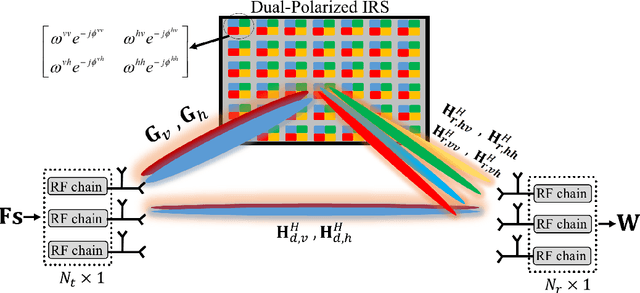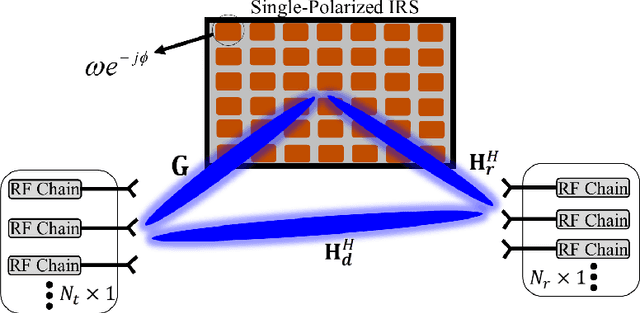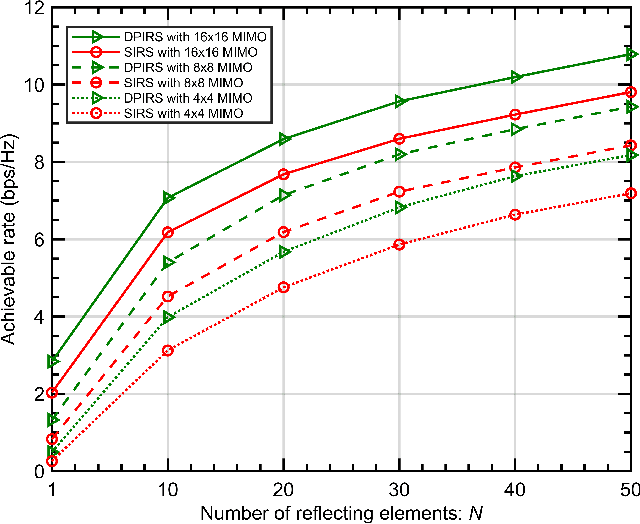Muteen Munawar
Dual-Polarized IRS-Assisted MIMO Network
Jul 11, 2023



Abstract:This study considers a dual-polarized intelligent reflecting surface (DP-IRS)-assisted multiple-input multiple-output (MIMO) single-user wireless communication system. The transmitter and receiver are equipped with DP antennas, and each antenna features a separate phase shifter for each polarization. We attempt to maximize the system's spectral efficiency (SE) by optimizing the operations of the reflecting elements at the DP-IRS, precoder/combiner at the transmitter/receiver, and vertical/horizontal phase shifters at the DP antennas. To address this problem, we propose a three-step alternating optimization (AO) algorithm based on the semi-definite relaxation method. Next, we consider asymptotically low/high signal-to-noise ratio (SNR) regimes and propose low-complexity algorithms. In particular, for the low-SNR regime, we derive computationally low-cost closed-form solutions. According to the obtained numerical results, the proposed algorithm outperforms the various benchmark schemes. Specifically, our main algorithm exhibits a 65.6 \% increase in the SE performance compared to random operations. In addition, we compare the SE performance of DP-IRS with that of simple IRS (S-IRS). For \(N = 50\), DP-IRS achieves 24.8 \%, 28.2 \%, and 30.3 \% improvements in SE for \({4} \times {4}\), \({8} \times {8}\), and \({16} \times {16}\) MIMO, respectively, compared to S-IRS.
 Add to Chrome
Add to Chrome Add to Firefox
Add to Firefox Add to Edge
Add to Edge